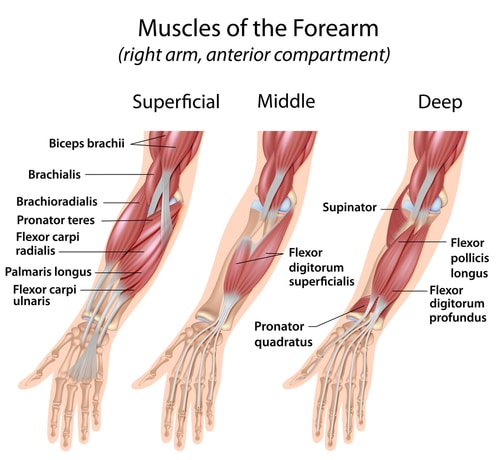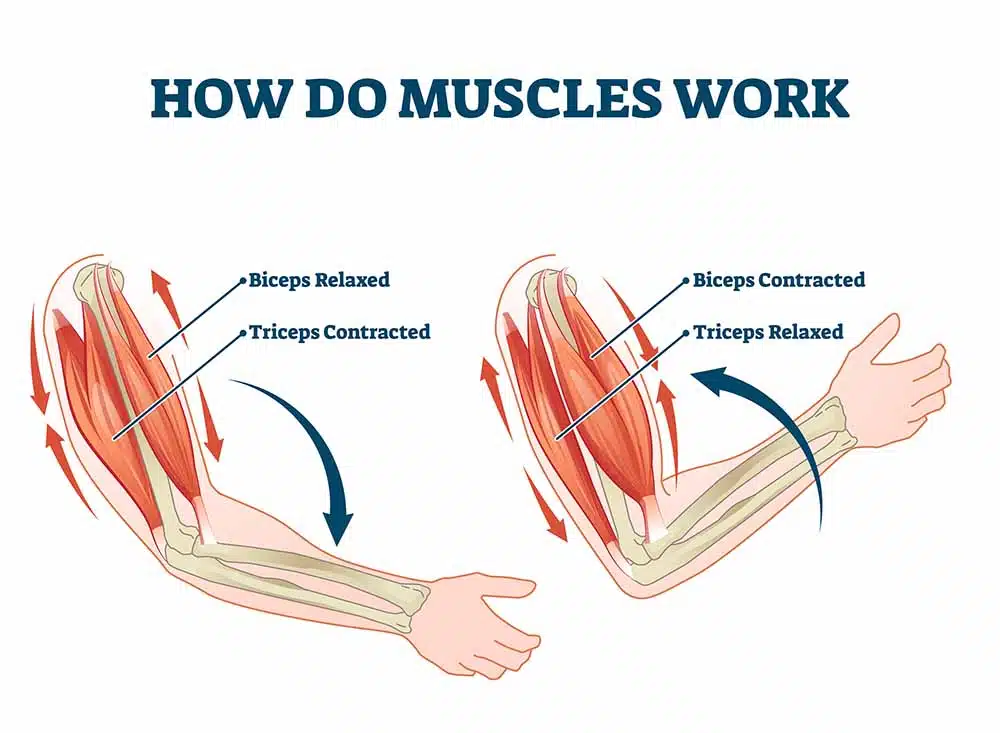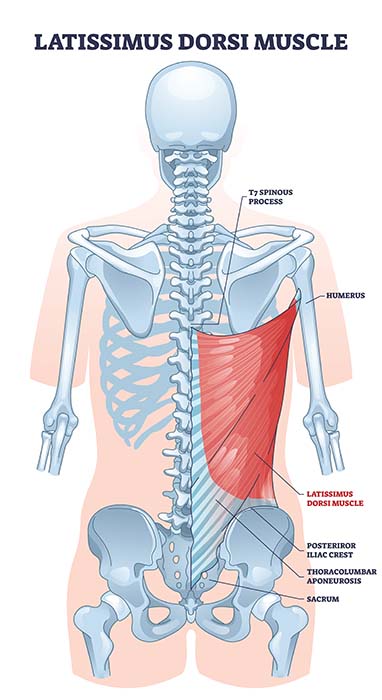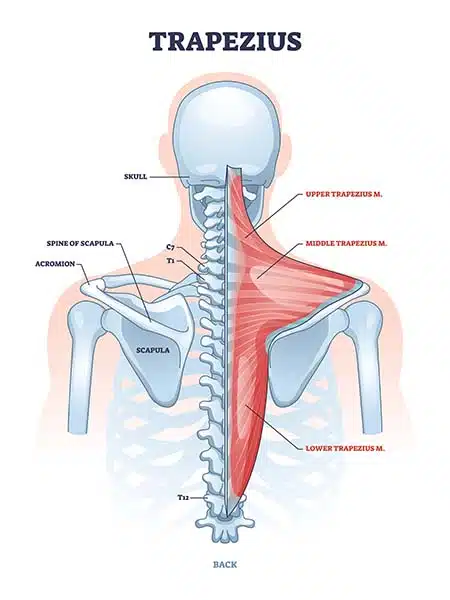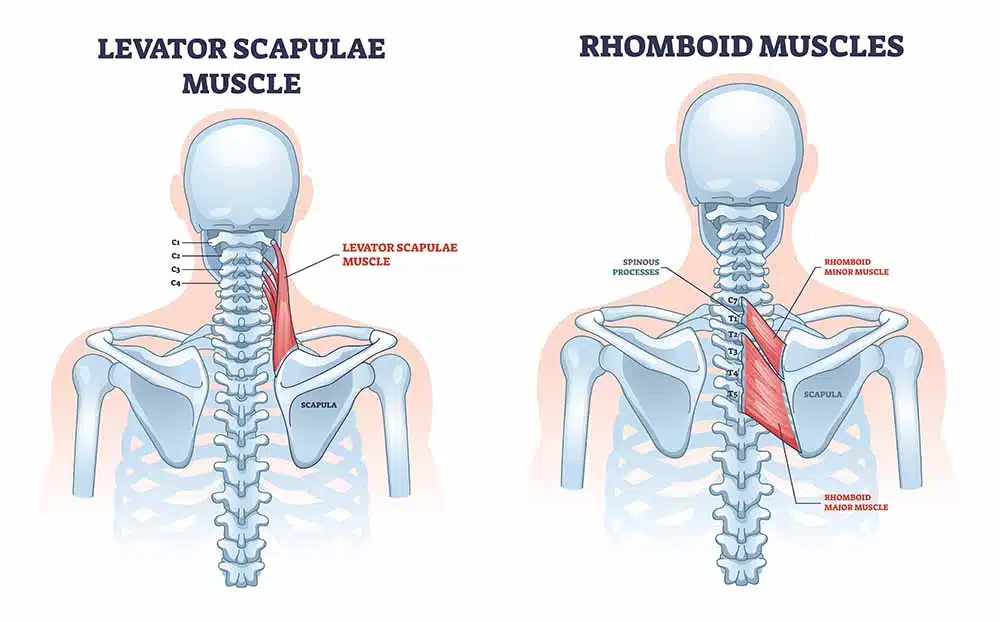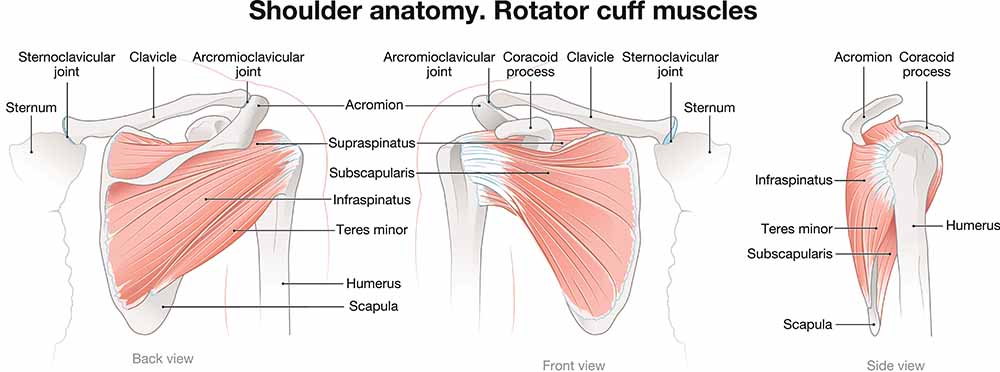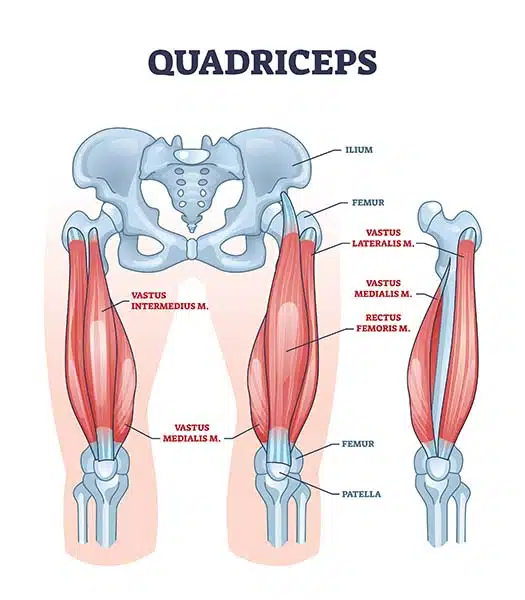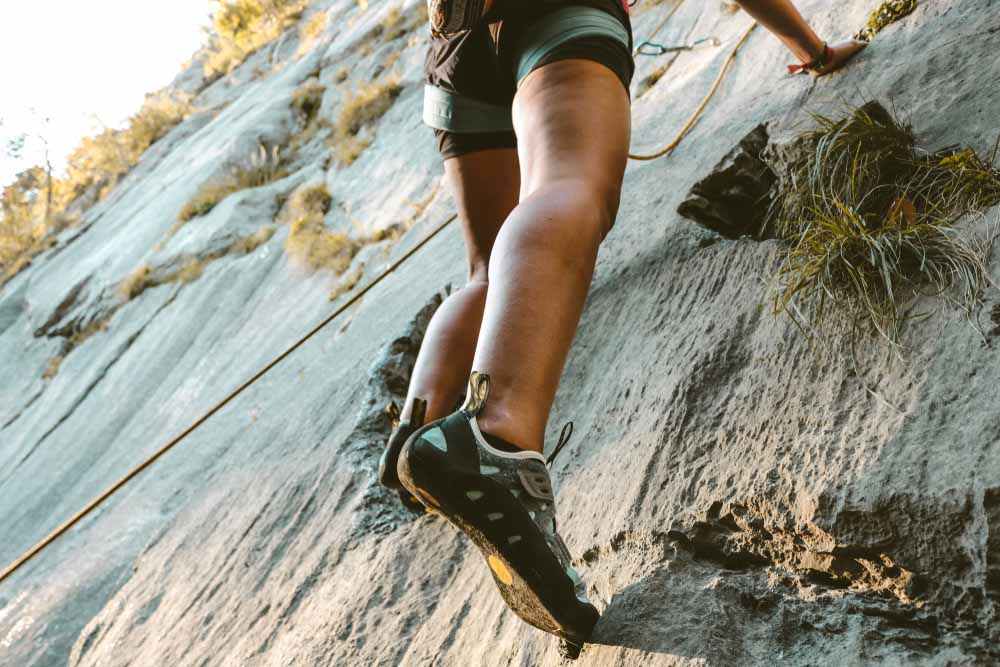Understanding the specific muscles engaged during rock climbing is not just an intriguing curiosity but it can be vital for optimizing performance and understanding injuries.
In this post, we will delve into the significance of knowing these different muscle groups, which ones are most used by climbers and unravel the variations across different climbing disciplines.
By acquiring this knowledge, hopefully you can get a better understanding of your body and its performance during climbing.
Importance of Knowing Rock Climber Muscles
A solid understanding of the muscles utilized in rock climbing is of paramount importance for climbers. It goes beyond a mere curiosity, as it directly influences their performance and overall training approach. Knowing which muscles are engaged during climbing movements enables climbers to design comprehensive and targeted training plans that cater to their specific needs.
With this knowledge you can focus on exercises that specifically target the muscles required for climbing, such as the forearms, fingers, back, shoulders, and core.
Moreover, understanding the correct engagement and activation of these muscles is crucial when working them. Climbers must be able to isolate and utilize the specific muscle groups needed for different climbing movements, whether it’s maintaining a strong grip, executing precise footwork, or generating power for dynamic moves.
This higher level of control and awareness allows climbers to move efficiently and effectively on the wall, conserving energy and reducing the risk of fatigue or overexertion.
Additionally, a solid grasp of rock climber muscles plays a pivotal role in injury prevention and management. By recognizing the muscles most prone to strain, climbers can take proactive measures to strengthen and protect them. They can also identify warning signs of overuse or acute injuries, allowing for early intervention, appropriate rest and recovery and hopefully avoiding common climbing injuries.
Most Used Muscles in Climbing
Multiple different muscle groups in the body are used during a bouldering or climbing session. Some of these help lift the body upwards whilst others do so via pushing movements.
The primary muscles that need to be strong are the forearms, lats, biceps, hip flexors, quads and calves. Let’s take a look at each of these in detail.
Upper Body Muscles
The major muscles used for rock climbing in the upper body are the forearms and biceps.
Forearms
Finger strength is probably the key requirement for climbing. Whilst there is all that upwards pulling you have to be able to keep your grip on the holds. As you improve and the difficulty of routes increases, those holds get smaller and smaller requiring more and more forearm strength and endurance.
Those new to the sport will find these muscles get tired rather quickly as they are not commonly developed in our sedentary modern lifestyles. It’s quite normal not to be able to feel your fingers after the first session. You’ll be shocked to see you won’t even be able to form a fist, let alone hold anything for a while.
One way to lessen the exertion on these muscles is with good form and technique, utilizing the other bigger muscles of the body as much as possible. Stronger shoulders, upper back and core will all contribute to transferring muscle exertion from the forearms to these other muscle groups contributing to higher performance.
The key forearm muscles involved in the gripping and holding action are:
- Flexor carpi ulnaris (or the superficial flexor muscle)
- Flexor carpi radialis
- Flexor digitorum superficialis (aka superficial finger flexor)
- Flexor digitorum profundus (aka deep finger flexor)
- Flexor pollicis Longus (aka long thumbbender)
These muscles work together in unison, giving you the endurance and grip to lift your body upward.
Biceps
These are the main muscles in the upper arm. Biceps flex the arms as you exert pressure and pull them. They also bring the body closer to the wall.
Moreover, they perform a supporting role and aid the lats and other rock climber muscles of the body during intensive pull-up movements.
Back Muscles
Here are the main muscles of the back used during rock climbing.
Lats or Latissimus Dorsi
These are the large muscles on the upper back’s sides. They are wing-shaped and go around the back to slightly below your armpits. They pull the body upwards as you grab the holds and heave yourself upwards.
They give you the extreme power and balance you need to pull yourself upward. The key functions of the lat muscles are:
- Pulling the body up and inwards.
- Maintaining body position
- They create tension in the core and upper body muscles so rock climbers can easily grip and move.
Trapezius Muscle
This relatively large muscle is located in the centre of your back, going from your upper back to the neck. The muscle controls the shoulder height, scapula movements and stability, which are very important during rock climbing.
The trapezius also depresses the shoulder blades. It also keeps the shoulders stable, balanced, and controlled during climbing.
Shoulder Muscles
The shoulder muscles, typically the rotator cuffs and deltoids, have a central job during rock climbing. They elevate the arms and support moving them in different directions, helping you pull and reach those far-off holds.
On top of that developing strong shoulders will help avoid typical elbow or finger injuries as these can help support much of your bodyweight during climbing.
Deltoids
Deltoid muscles are located on top of the shoulders. They have three parts, the anterior or front, posterior or rear, and medial or middle.
The front delt is involved in raising the arm forward and upward. It is also involved in shoulder horizontal adduction, where the arm moves across the body toward the opposite side.
The medial deltoid is situated in the middle of the shoulder. Its primary function is shoulder abduction, which means raising the arm away from the body to the side such as when reaching for that side-pull.
Finally, the posterior deltoid is located on the back of the shoulder and is the least used of the three in climbing. It is involved in shoulder extension, which entails moving the arm backward, also assisting in shoulder horizontal abduction, where the arm moves away from the body in a backward motion.
Rhomboids
These are located by the shoulder blades and help hold the torso as you climb. Rhomboids retract your shoulders as and when required, bringing them close together.
Rotator Cuff Muscles
The rotator cuff is composed for four muscles which all contribute to shoulder stability and strength. They keep the upper arm bone and joint in place, i.e. inside the socket.
These muscles are
- Teres minor
- Subscapularis
- Supraspinatus
- Infraspinatus
They work in cohesion and assist your body in raising and lowering the arms. They also stabilise the shoulders, especially when things get rough or steep up the climb.
Core Body Muscles
Core body abdominal muscles are stabilisers. They keep your body firm and controlled on the rock.
These muscles are useful in all situations but even more so on steep terrain, where you have to control your trunk and legs, keeping your pelvis and chest aligned.
The core muscles take off the load from your biceps, back, and forearms. They also reduce fatigue and contribute to your endurance for a long climb.
Abs
As with the core, ab muscles also provide stability, control, and transfer power through the body. Engaging the abs aids in maintaining balance, executing precise footwork, generating explosive moves, and stabilizing the body during dynamic climbing sequences. Strong abs therefore enhance performance through increased efficiency and control.
Lower Body Muscles
The use of the lower body comes with due practice and time with a better technique. Avid climbers learn to use the lower body as much as possible instead of relying solely on the upper body to pull their way up.
Quadriceps
The quadriceps are the four key muscles present in your front thigh. They help straighten the leg and provide enormous pushing power for the whole body.
Hip Flexors
When climbing, the hip flexors are engaged to bring the leg forward and upward, allowing climbers to execute high steps, reach for holds, and maintain body tension. They are essential for maintaining balance, generating power for dynamic movements, and stabilizing the body during strenuous holds.
Strong and flexible hip flexors contribute to efficient and fluid climbing motions, enhancing overall performance on the wall.
Calves
The calf is made up of two muscles and supports the feet. When climbing it helps you stand and retain your balance when pushing hard on on your toes to reach that next hold.
Muscle Use in Different Climbing Styles
There are multiple different climbing styles and each puts more or less emphasis on the rock climber muscles groups discussed.
Slab Climbing
In slab climbing the angle is less steep and you mostly rely on friction and footwork rather than the holds. This style puts more pressure on the legs, feet and calf muscles.
Given the emphasis of body weight placed on the lower body slab climbing is much easier on the forearms and upper body.
Overhangs
Overhangs are the complete opposite to slab climbing. The wall is inclined towards the climber, considered to have a negative angle. This means that the angle between the wall and the ground is less than 90 degrees, creating a much more challenging experience as all the climbers body weight is transferred onto the upper body away from the legs.
This therefore means that the forearms, biceps, shoulders and upper back work much more. Controlling the trunk, hips and lower body at this angle also requires much more core and abs strength.
Does Rock Climbing Build Muscle Mass?
It all depends on the person, routine, and technique. Usually, newcomers will experience muscle gain in the key muscle groups we discussed. That’s especially true if they make rock climbing a regular practice, doing it twice or thrice a week.
However after this initial gain, climbers don’t continue to build larger and larger muscles as with say weight lifting. Rock climbing remains a strength to weight optimization sport and therefore having too much muscle mass would actually hinder performance.
Instead, climbers focus on cutting down fats to get an even muscle tone rather than becoming increasingly muscular over time.
After Thoughts on Rock Climber Muscles
Understanding rock climber muscles can be more than a mere curiosity, it can be a way to unlock your true climbing potential.
By knowing which muscles are engaged, climbers can create targeted training plans, optimize their technique, and prevent injuries. The role of core muscles, hip flexors, and the importance of strong abs become clear, enabling climbers to enhance stability, generate power, and execute precise movements.
Recognising the variations and different muscular or physical demands across climbing disciplines can help climbers to tailor their training to specific demands. May this understanding of climbers’ muscles open doors to new heights in the vertical world.



